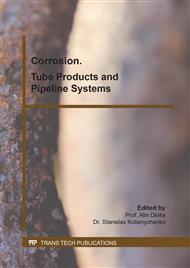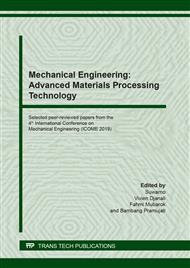p.166
p.172
p.182
p.188
p.196
p.204
p.213
p.218
p.224
Effect of Sulfuric Acid Concentration on the Corrosion Rate of ASTM A213-T12 Steel
Abstract:
Even though carbon steel is susceptible to corrosion degradation, carbon steel is widely used for applications in the industry. Impurities in steel composition are known to affect the mechanical and corrosion properties. There are many studies on the corrosion of steel, but for a specific application, further research still required. The present work is conducted to determine the effect of low concentration of sulfuric acid on the corrosion rate of power plant steel ASTM A213-T12 with a solution concentration from 0.01-0.05 M H2SO4. The corrosion rate was determined by using an immersion test as well as a polarization method using a potentiostat. The result shows that increasing the concentration of sulfuric acid molarity, the corrosion rate tended to increase. Furthermore, the effect of phosphor contents significantly affects the corrosion rate in which steel with high phosphor contents has a high corrosion rate.
Info:
Periodical:
Pages:
213-217
Citation:
Online since:
October 2020
Authors:
Keywords:
Price:
Сopyright:
© 2020 Trans Tech Publications Ltd. All Rights Reserved
Share:
Citation:



